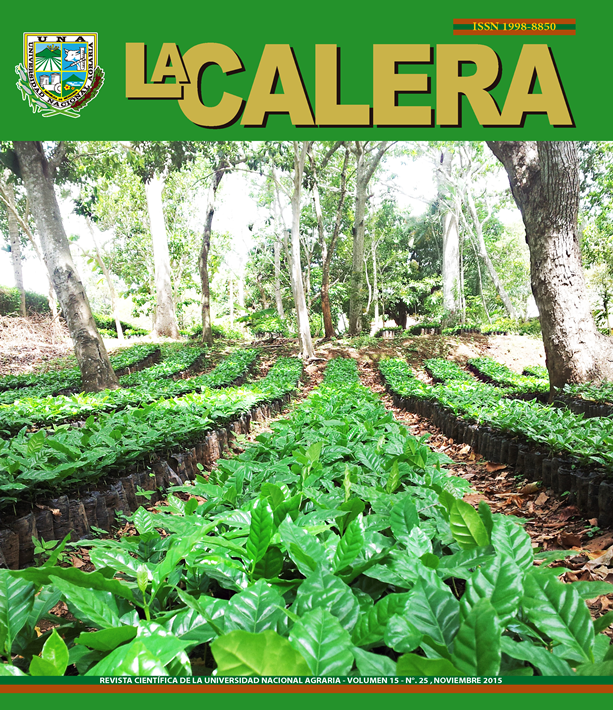Composition, structure, diversity and increased of forest secondary vegetation in dry tropics, Nandarola, Nicaragua
Abstract
The dry forests of Nicaragua present a diversity of goods and services such as timber species as non-timber species (medicinal, floor protection, wild fauna) and scenic beauty. This study was carried out at The Chipopa, community of the department of Granada. The objective was analyzing the floristic composition, structures, floristic diversity and increment, of the secondary vegetation of the tropical dry forest. To obtain basic information on the arboreal vegetation that allows guaranteeing a management ecologically sustainable. There were two mensuration of the diameter of the arboreal species bigger than five centimeters in three permanent plots. The plots were of 0.25 hectare and were established during the period 2006 and 2009. A total of 43 species were identified represented in 26 botanical families, being the most representative Fabaceae, Euphorbeaceae, Hipocrataceae, Mimosaceae, Rubeaceae. The diversity of species is a little bigger in the 2009; confirming in this way that the forest follows a slow but sure process of enrichment floristic. The periodic increment annual average was of 0.58 cm year-1. As the time the forest reaches a structure with trees of all the sizes and a bigger composition of species. It is recommended to apply silvicultural treatments such as lianas liberation, thinning to improve increment of the species.
Downloads
Metrics
References
Finegan, B. 1992. El potencial de manejo de los bosques húmedos secundarios neotropicales de las tierras bajas. Serie técnica. Informe técnico Nº 188. Colección silvicultura y manejo de bosques naturales. CATIE. Turrialba, CR. 28 p.
Finegan, B; Delgado, D. 1997. Bases ecológicas para el manejo de bosques tropicales: un estudio de caso en Costa Rica. Parte 2. El Chasqui. CATIE 18:16-22.
Holdridge, LA. 1996. Ecología basada en la zona de vida. Instituto Interamericano de Cooperación para la Agricultura. San José, CR. 216 p.
Kattan, G. 2002. Fragmentación: patrones y mecanismos de extinción de especies. In Ecología y conservación de los bosques neotropicales. Libro Universitario regional. Eds. Guariguata, R; Kattan, GH. Cartago, CR. 561 p.
Lamprecht, H. 1990. Silvicultura en los trópicos. Ecosistemas forestales en los bosques tropicales y sus especies arbóreas, posibilidades y métodos para un aprovechamiento sostenido. trad. A. Carrillo. República Federal de Alemania. GTZ. 335 p.
MARENA (Ministerio del Ambiente y los Recursos Naturales, NI). 2001. Informe del estado ambiental en Nicaragua, 2001. Gráfica editora. Manágua, NI. 118 p.
Matteucci, SD; Colma, A. 1982. Metodología para el estudio de la vegetación. Secretaría general de la organización de estados americanos. Washington, US. 168 p.
Moraes Ch. 2001. Almacenamiento de carbono en bosques secundarios en el municipio de San Carlos, Nicaragua. Tesis Mag. Sc. Programa de enseñanza para el desarrollo y la conservación. Escuela de Posgrado. CATIE, Turrialba, CR. 116 p.
Pérez Pérez, AM. 2004. Aspectos conceptuales, análisis numérico, monitoreo y comunicación de datos sobre biodiversidad. MARENA-ARAUCARIA. Centro de malacología/diversidad animal. UCA. Managua. NI. 302 p.












